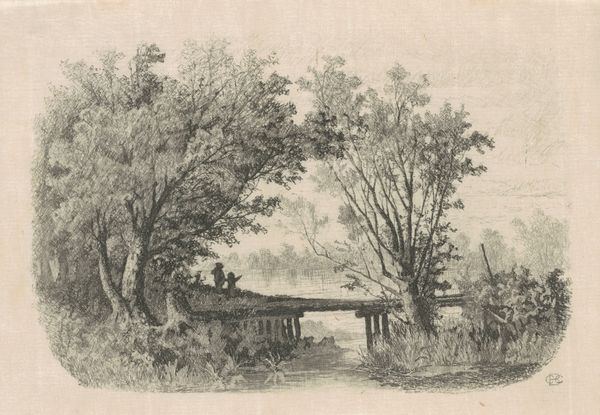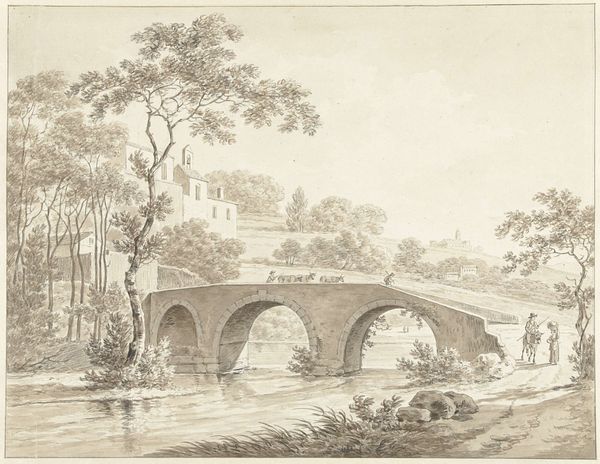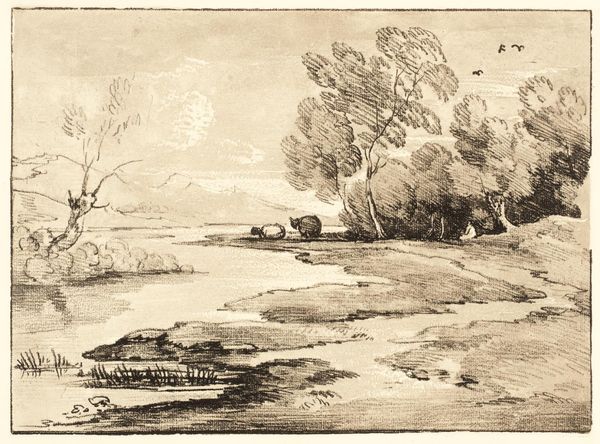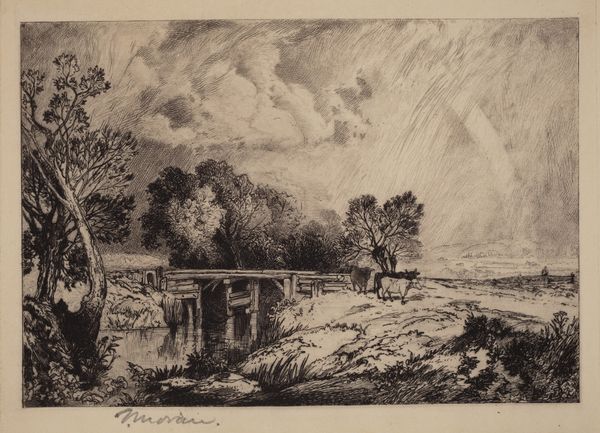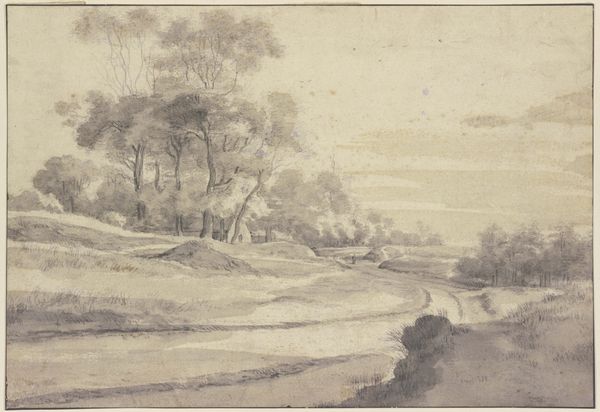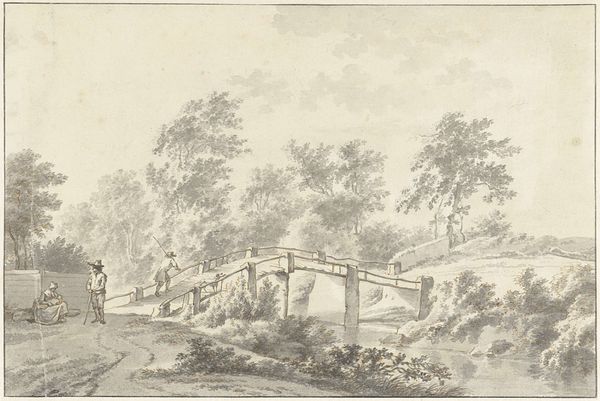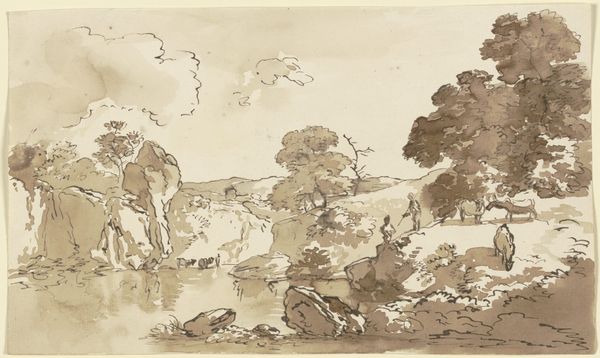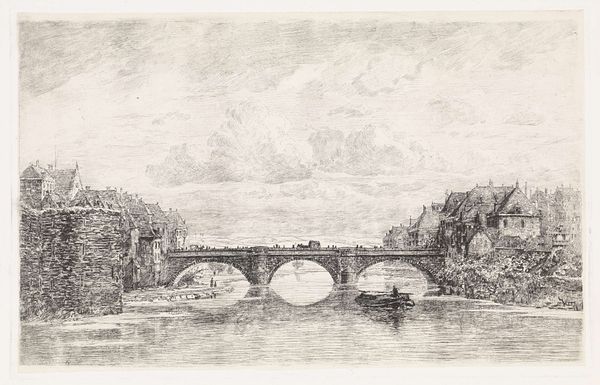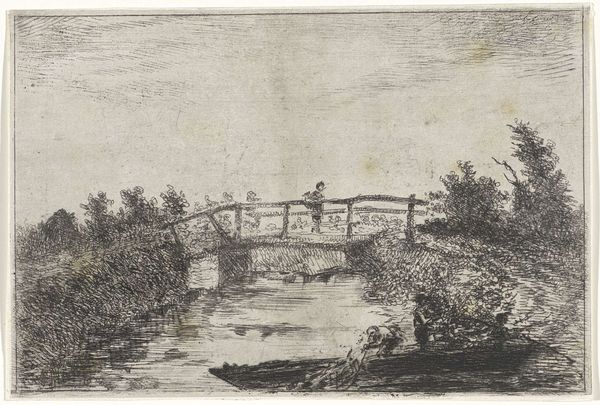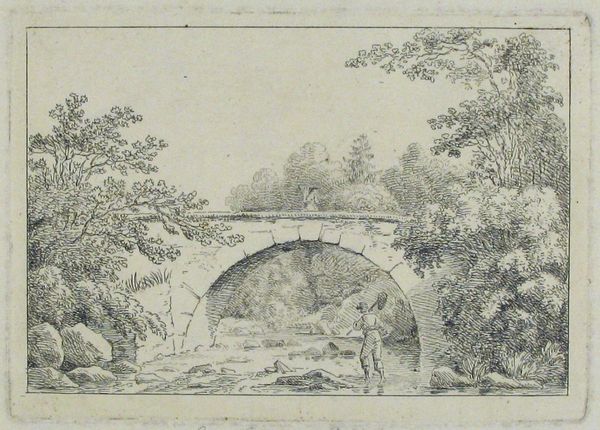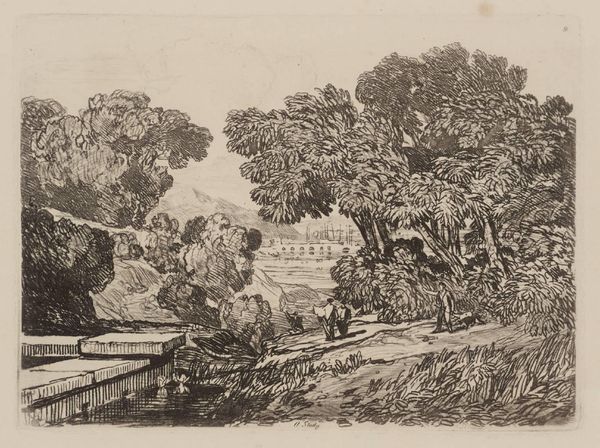
drawing, ink
#
drawing
#
baroque
#
ink painting
#
landscape
#
charcoal drawing
#
ink
#
cityscape
#
history-painting
Dimensions: overall (approximate): 20.5 x 26.9 cm (8 1/16 x 10 9/16 in.) support: 26.6 x 40.5 cm (10 1/2 x 15 15/16 in.)
Copyright: National Gallery of Art: CC0 1.0
Editor: Here we have Claude Lorrain's "Landscape with a Bridge," dating from around 1630 to 1635, created with ink. There's a tranquility about this ink drawing. It evokes a pastoral, almost classical serenity, and invites me to meditate on a gentle time long gone by. What resonates with you in this piece? Curator: The bridge is not just a physical structure, but a potent symbol. What does it connect? For Lorrain, it might represent the classical past bridging to his present, the rural world connected to a distant, unseen urban space. Notice how the figure on the bridge is tiny, almost overwhelmed by the landscape. Is it meant to signify mankind’s relationship with nature? Editor: That's interesting, this man traversing over the bridge seems at peace in nature. This man looks smaller than I noticed before, but his action becomes monumental. What is being monumentalized in that relationship you think? Curator: Perhaps the enduring allure of Arcadia. Lorrain wasn't just depicting scenery; he was recreating an ideal, filtered through the lens of classical literature and myth. The ink itself has a sepia tone which imparts a sense of history to the scene; this is Arcadia filtered through time. Think about the symbols embedded: the sturdy bridge suggests an enduring presence, the flowing water symbolizing change. How do these contrast and support each other? Editor: It’s like a memory, almost…both solid and fluid. Now when I look at this landscape it speaks about nature and this man and the timelessness that binds them. Curator: Precisely. Lorrain offers a constructed past to comment on the present. He selects and curates a scene not to represent what he sees, but to reveal to his viewers the visual ideals of his mind and world. We get to glimpse what Arcadia looks like for him, in pigment and emotion.
Comments
No comments
Be the first to comment and join the conversation on the ultimate creative platform.
